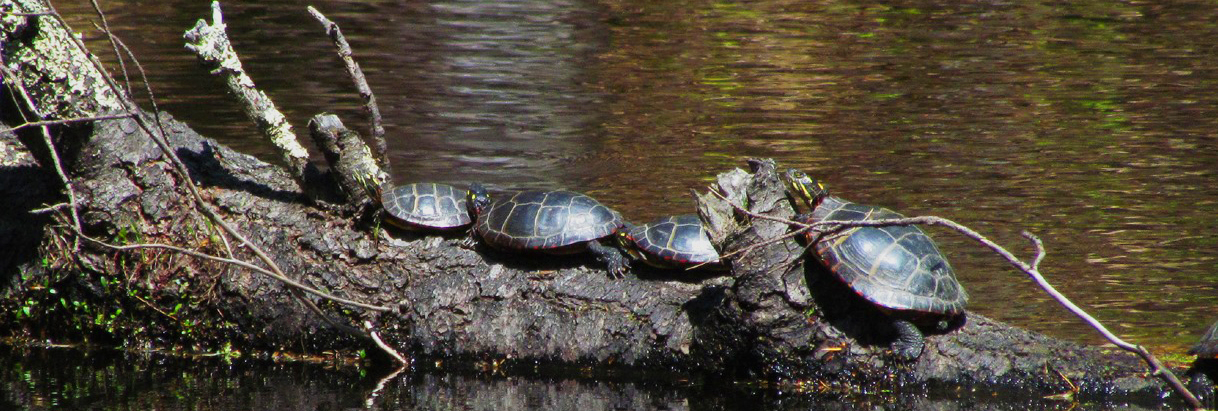TEACHER'S GUIDE FOR EXPERIMENTS AND OBSERVATIONS
Overview:
These experiments focus on physical and chemical characteristics of the Lamprey River that students can observe, measure, record, and compare. During the pre-field activities, students have an opportunity to practice measuring skills or make specific equipment to use in the field. After gathering and recording information in teams, students have the opportunity to share the data they have collected to develop a "bigger" picture of the significance of what they have discovered.
Learning Objectives:
Students will be able to
- build and/or use a number of monitoring tools;
- observe, measure, and record physical, chemical, and biological properties of the Lamprey River, and make accurate statements about their relationships.
Preparations:
During the pre-field and field experiments students will measure the following properties of the Lamprey River in one or two locations and record their findings on the data sheets at the back of this section:
- speed of current (stopwatch, 20 meter measured rope, bag of apples)
- air and water temperature (2 thermometers with both Celsius and Fahrenheit scales
- dissolved oxygen (La Motte Dissolved Oxygen tablets kit or CHEMets Kit )
- pH (pH test strips or LaMotte or Hach pH kit)
- transparency of water (Secchi disk)
Procedures:
Pre-field experiment:
1. Collect all the necessary materials to conduct the experiments and study the Teacher Background information preceding each Student Experiment.
2. Discuss with the students the characteristics they are going to measure and why they are important to animals and plants that live in the river habitat.
3. Divide the class into 5 research teams. Each group will choose a recorder to write down information on the data sheet, a technician to be responsible for the equipment before and after the experiment, two scientists to conduct the experiment, and a presenter to share the information with the rest of the class.
4. Distribute the appropriate experiment information, equipment, and Data Sheet #8, and a clipboard to each group. Laminating the experiment information sheets on stiff paper is helpful so students can easily handle them in the classroom and the field.
5. If possible, have an adult work with each group. Inviting the chaperones who will be going on the field trip to assist the students in the classroom is a good opportunity for them to learn the experiments before they are expected to help the students at sites along the river.
6. Allow time for the class to come together, report, and discuss each experiment. Help the students understand the relationship of their experiment to the animals and plants that live in and along the river. Ask what the children think the data might be telling them.
7. Examine the other observation sheets at the end of this lesson and discuss them with the children. Emphasize using their senses to help make observations.
Field experiment:
1. Prior to leaving on the field trip, collect all the necessary equipment and organize it according to the experiment in which it will be used. The technician for each of the five groups can be responsible for the equipment, with the assistance of the adult chaperone.
2. While at the field site, be sure to have adequate adult supervision (at least one adult for each experiment team). Because even the cleanest-looking water can be contaminated, make sure students do not eat anything while they collecting samples and conducting the experiments. Use handi-wipes to clean hands after the experiment phase is complete.
3. As each experiment is conducted, be sure that each person records the necessary information on Data Sheet #8. Conduct the experiments at different sites so that results can be compared later.
4. After the experiments have been conducted, students can be given observation sheets to help them study the site in more detail.
5. Briefly share and summarize each site with the help of the students before they get back on the bus to go to the next site.
6. When the class has returned from the field trip, bring the students back together in the next day or two to talk about the data they have collected from the experiments and observations. Compare and contrast results of experiments at different sites and discuss observable differences such as current speed, water temperature, dissolved oxygen levels, etc.. Record the results in a variety of ways: on the charts that have been developed in other lessons, on the watershed maps, using the computer to graph and compare data, and through creative interpretation in dioramas, poems, stories, etc..

